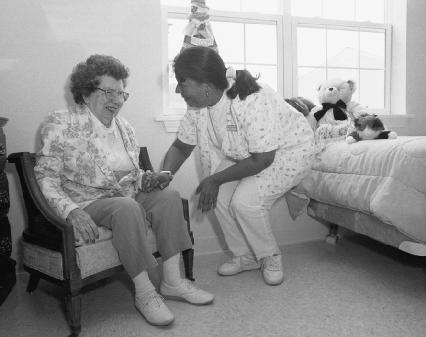
We all know so well that Alzheimer’s disease is difficult to diagnose. Still up till now, the only certain method of Alzheimer’s diagnosis is made after the patient's death through brain biopsies. While this is a certain method, it is totally nostalgic just like an autopsy. What are we needed for real are highly developed tests and markers in the future.
The conventional working method for Alzheimer’s diagnosis by a process of elimination is done with living patients. They thoroughly test for and eliminate each of the many aspects that could possibly be responsible for the visible, behavior-related warning signs. In the event that these possibilities are eliminated, then Alzheimer’s is the only remaining possibility and a diagnosis can be done.
Many researchers have been experiencing hardships at work developing methods and markers for early and certain detection of the early stages of the Alzheimer’s process of neurological degeneration. The target was to find Markers, be it biochemical, genetic or physical, with high link to the inception and succession of this disease.
The target is basically to know how to see it coming and measure its succession, so that various new treatments can be started as early as possible. For this reason, their effects on the disease in the patient can be measured to test effectiveness, to try different doses and then measure the results on it.
Genetic indicators have been found, biomarkers are being developed and brain scan technology is constantly improving. These important progresses are being made in the area of Alzheimer’s diagnosis.
* Genetic. There was a set of people at the Translational Genomics Research Institute in Phoenix, Arizona has found a gene called GAB2. You are at far higher risk of eventually developing Alzheimer's if you have a damaged version of it. The team is now functioning to build up a fast and simple test to detect the damaged gene.
It is better known that identification of the presence of the gene would make out people who are in danger for the disease shortly in their lives. Even before it starts, it may sooner or later help us to diagnose Alzheimer’s disease.
Biomarkers. Nanogen, Inc., in San Diego, California-based highly developed technology company works to provide researchers, clinicians and physicians with enhanced methods and apparatus to guess, make a diagnosis, and in due course facilitate to treat disease.
Early in 2007, Nanogen, Inc. declared having received two patents that relate to the identification of protein biomarkers for Alzheimer’s disease. They would have had to demonstrate something that is new, unique and that works to get a patent.
There are non-intrusive methods let physicians have a picture of the living brain itself. And these are; brain scan tests, such as computerized tomographies (CT) scan which is the most commonly used, magnetic resonance imaging (MRI) scan, or positron emission tomography (PET), along with Single Photon Emission CT (SPECT).
Owing to these scanning technologies, these enable health care professionals to see malfunctions within the brain. Even as these technologies made available for the professionals in helping Alzheimer’s diagnosis, they still exert effort to get and present good, clear pictures and information. On the other hand, these are constantly being improved.
But still the current level and intensity of the investigation, and the visible progress that is being made, are hopeful indications. With any luck we will have much better methods for early Alzheimer’s diagnosis and treatment in the long run.